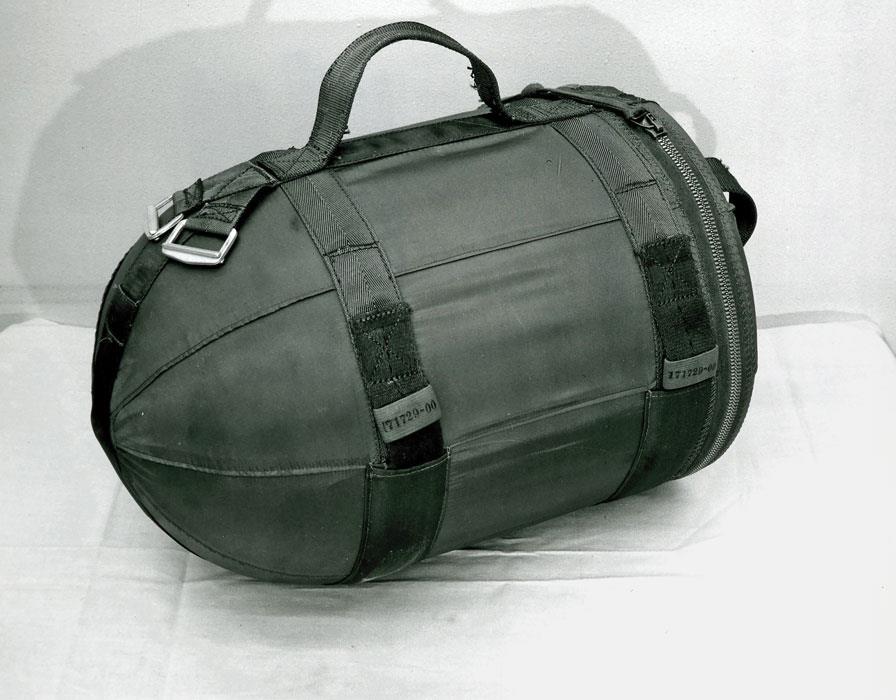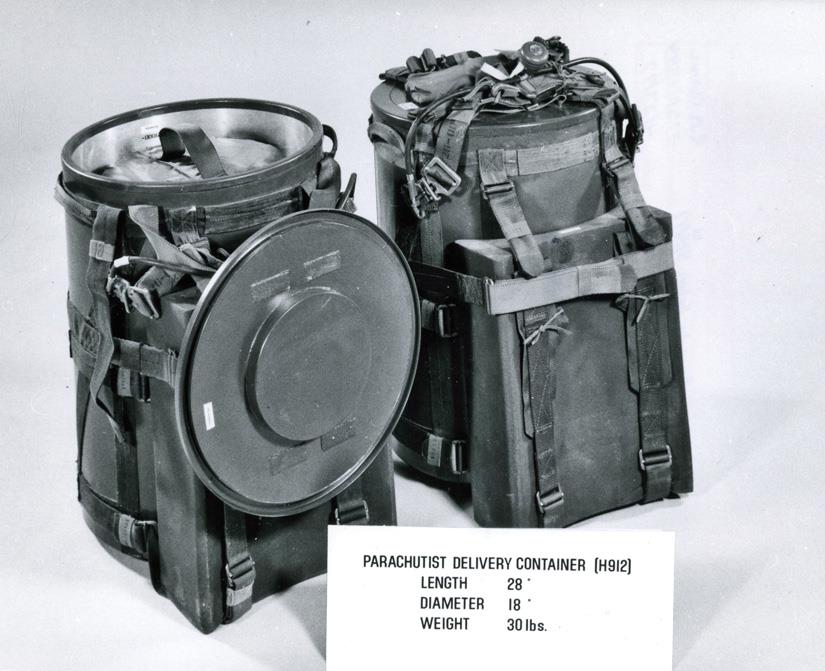Special Atomic Demolition Munition on:
[Wikipedia]
[Google]
[Amazon]


 The Special Atomic Demolition Munition (SADM), also known as the XM129 and XM159 Atomic Demolition Charges, and the B54 bomb was a nuclear man-portable
The Special Atomic Demolition Munition (SADM), also known as the XM129 and XM159 Atomic Demolition Charges, and the B54 bomb was a nuclear man-portable
SADM Delivery by Parachutist/Swimmer (Special Atomic Demolition Munition) Film Clipfull film
Foreign Policy Article on mission types and personnel
ADM Web Page
{{United States nuclear devices Nuclear weapons of the United States Land mines of the United States Tactical nuclear weapons 1960s in the United States Cold War weapons of the United States Atomic demolition munitions Military equipment introduced in the 1960s


 The Special Atomic Demolition Munition (SADM), also known as the XM129 and XM159 Atomic Demolition Charges, and the B54 bomb was a nuclear man-portable
The Special Atomic Demolition Munition (SADM), also known as the XM129 and XM159 Atomic Demolition Charges, and the B54 bomb was a nuclear man-portable atomic demolition munition
Atomic demolition munitions (ADMs), colloquially known as nuclear land mines, are small nuclear explosive devices. ADMs were developed for both military and civilian purposes. As weapons, they were designed to be exploded in the forward battle ...
(ADM) system fielded by the US military from the 1960s to 1980s but never used in combat.
History and design
At the time of the weapon's development, the existing Atomic Demolition Munition (ADM) was the T-4 Atomic Demolition Munition. Its transport required 4 men, each carrying a section of the weapon. Development began in June 1960 and an interim Mark 54 Mod 0 (now called the B54-0) weapon was put into production in April 1963. Production of the B54 Mod 1 SADM began in August 1964. The weapon was in diameter, long, and weighed . It included the warhead, a fuzing and firing system with a mechanical timer, a ferroelectric firing set and a sealed housing. The body was constructed with aluminum forgings and molded fiberglass, and foam-rubber insulation was used between the warhead and case. Dials were illuminated with a tritium-phosphor paint for easy night reading. A housing for underwater emplacement was provided that included external controls. The B54 Mod 2 started production in June 1965. The weapon was the same size as previous mods but now weighed . The yield is estimated to be .Use
Offensive use
ADM employment manuals describe the use of ADMs tactically in both offensive and defensive operations. In offensive operations, ADMs are described as being useful for improving flank and rear security of a unit, impeding counterattacks and assisting in enemy entrapment.Engineering and defensive use
ADM employment manuals describe the use of ADMs defensively for combat engineering purposes. Possible targets described include bridges, dams, canals, tunnels, airfields, railroad marshaling yards, ports and industrial plants, and power facilities. Extensive tables were provided to enable the selection of the correct yield for each particular target. These tables accounted for various employment particulars such as depth of burial, fallout considerations, and minimum safe separation distances between adjacent weapons and personnel.Suicide attack allegations
On December 27, 2018, the ''Green Bay Press-Gazette
The ''Green Bay Press-Gazette'' is a newspaper whose primary coverage is of northeastern Wisconsin, including Green Bay. It was founded as the ''Green Bay Gazette'' in 1866 as a weekly paper, becoming a daily newspaper in 1871. The ''Green Ba ...
'' interviewed veteran Mark Bentley, who had trained for the Special Atomic Demolition Munition program to manually place and detonate the SADM. The report stated that he and other soldiers training for the program knew this was a suicide mission
A suicide mission is a task which is so dangerous for the people involved that they are not expected to survive. The term is sometimes extended to include suicide attacks such as kamikaze and suicide bombings, whose perpetrators actively commit s ...
because either it would be unrealistic to outrun the timer on the bomb, or that soldiers would be obligated to secure the site before the timer went off.
However, employment manuals specifically describe the firing party and their guard retreating from the emplacement site, at which point security of the device is provided through a combination of passive security measures including concealment, camouflage, and the use of decoys; and by active security measures including booby traps, obstacles such as concertina wire
Concertina wire or Dannert wire is a type of barbed wire or razor wire that is formed in large coils which can be expanded like a concertina. In conjunction with plain barbed wire (and/or razor wire/tape) and steel pickets, it is most ofte ...
and landmines, and long-range artillery fire. Further, the SADM included a Field Wire Remote Control System (FWRCS), a device that enabled the sending of safe/arm and firing signals to the weapon via a wire for safe remote detonation of the weapon.
See also
* W54 Warhead * Medium Atomic Demolition Munition * Suitcase nuclear device *List of nuclear weapons
This is a list of nuclear weapons listed according to country of origin, and then by type within the states.
United States
US nuclear weapons of all types – bombs, warheads, shells, and others – are numbered in the same sequence starting wi ...
References
Bibliography
* *External links
SADM Delivery by Parachutist/Swimmer (Special Atomic Demolition Munition) Film Clip
ADM Web Page
{{United States nuclear devices Nuclear weapons of the United States Land mines of the United States Tactical nuclear weapons 1960s in the United States Cold War weapons of the United States Atomic demolition munitions Military equipment introduced in the 1960s